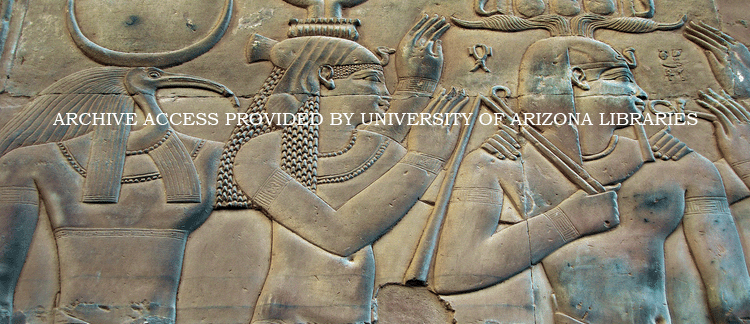Abstract
Tell Tebilla (Ro-nefer) represents one of several riverine and maritime ports in Egypt’s delta during Dynasties 21–30 (1069–343 BCE). It displays diverse relations, including with southern Egypt, the East Mediterranean, and Near East. Tebilla apparently flourished, despite periodic political fragmentation, economic decline, civil wars, rebellions, and attacks and invasions by Kushites, Assyrians, Babylonians, and Persians. Growing prosperity is evident through Sheshonq I’s construction of a stone temple in Dynasty 22, and its receipt of costly statues and offerings by Late Period officials and priests. The town’s importance is emphasized by the presence of high ranking officials, elaborate tombs, fittings, and furnishings, and a probable Dynasty 30 enclosure (235 by 352 m) that ranks among medium to large Egyptian temple precincts. Although this enclosure might have doubled as a refuge, its architecture lacks effective military features; Artaxerxes III’s 342 BCE campaign breached Egypt’s delta defenses and destroyed many temples and towns, including Tebilla.
How to Cite
Mumford, G., (2013) “A Late Period Riverine and Maritime Port Town and Cult Center at Tell Tebilla (Ro-nefer)”, Journal of Ancient Egyptian Interconnections 5(1), 38-67. doi: https://doi.org/10.2458/azu_jaei_v05i1_mumford
2688
Views
317
Downloads
